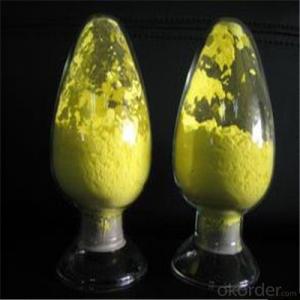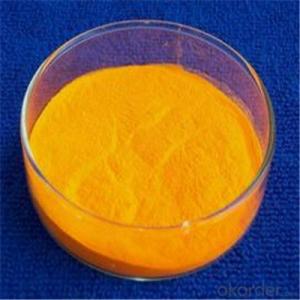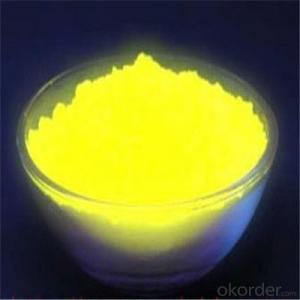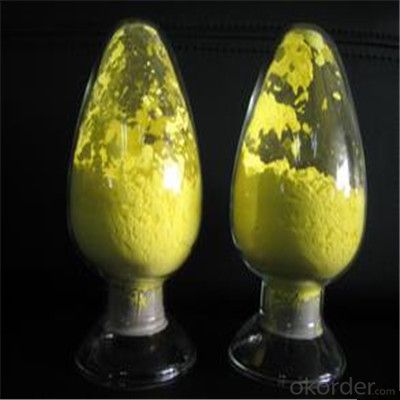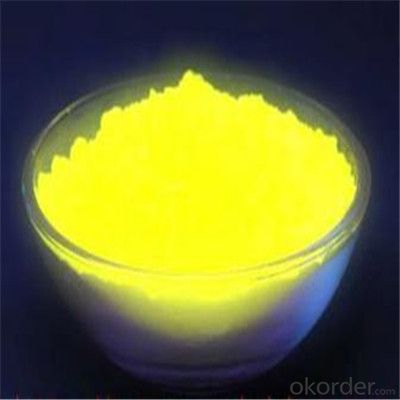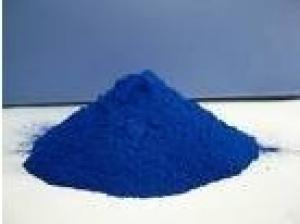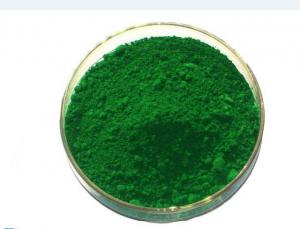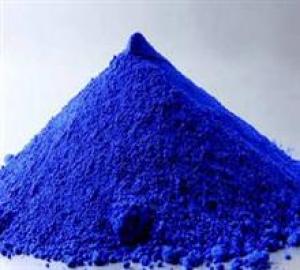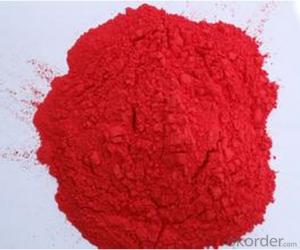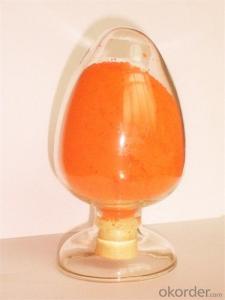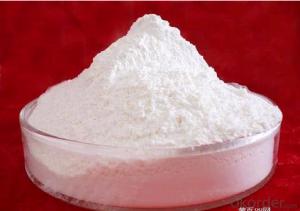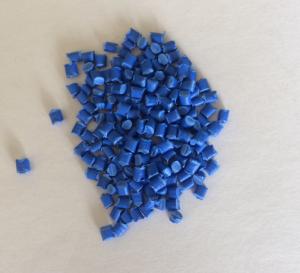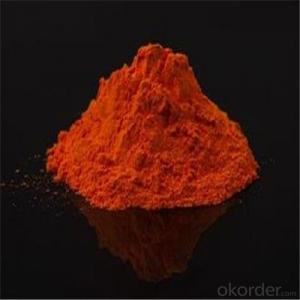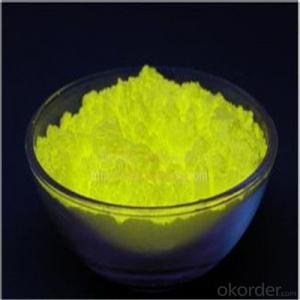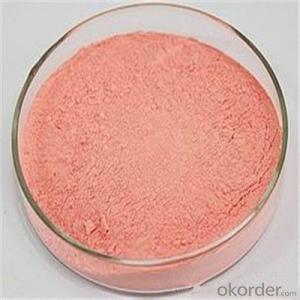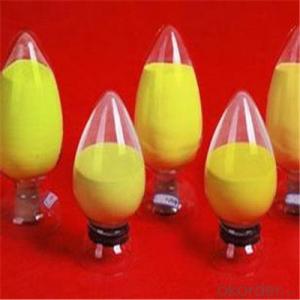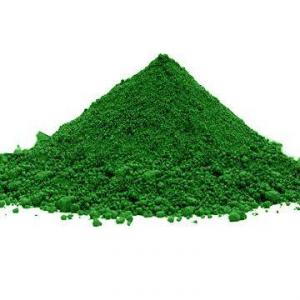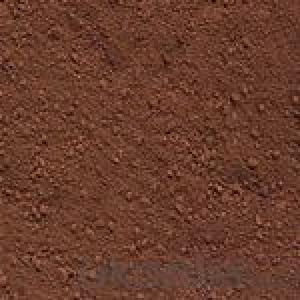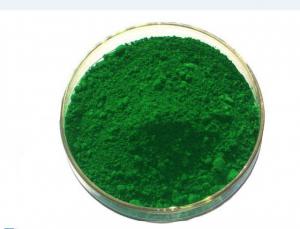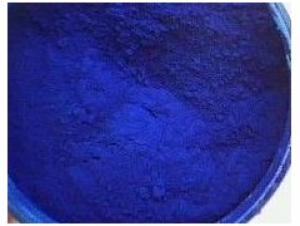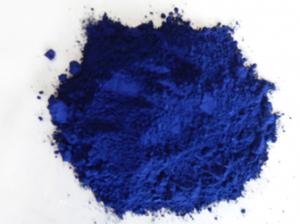LED Fluorescent Powder with High Brightness Hot Sale from China
- Loading Port:
- Ningbo
- Payment Terms:
- TT OR LC
- Min Order Qty:
- 55 kg
- Supply Capability:
- 100000 kg/month
OKorder Service Pledge
OKorder Financial Service
You Might Also Like
Description of LED Fluorescent:
Extensive usage: it applies to various LED encapsulation from cool white to warm white. The rendering index can be up to 98 with red powder.
Festures of LED Fluorescent:
Appearance: Red crystal powder.
Chemical Component: Oxynitride chemical compound
Chemical Stability: No decomposability in water, strong stability from -50°C to 300°C in the air.
Safety Capability:Meet the RoHS standard, contains no radiation, no toxicity, no hazard to human, and no pollution to the environment.
Specifications of LED Fluorescent:
Phosphor thermometry is a temperature measurement approach that uses the temperature dependence of certain phosphors. For this, a phosphor coating is applied to a surface of interest and, usually, the decay time is the emission parameter that indicates temperature. Because the illumination and detection optics can be situated remotely, the method may be used for moving surfaces such as high speed motor surfaces. Also, phosphor may be applied to the end of an optical fiber as an optical analog of a thermocouple.
Images of LED Fluorescent:

FAQ:
1.When can i get the price quotation?
We can send you the quotation within 24hours after your inquiry, including the shipping cost if you need.
2.What about payment term?
30% T/T deposit, balance against B/L copy.
Full T/T payment if quantity less than MOQ.
3. What’s your after-sales service?
One-year warranty, and 1% common accessories.
- Q: I need to find powdered paint or pigment that I can throw, for some photographs.Preferably cheap, and that wouldn't stain skin.I've looked into powder paint, though this tends to stain skin for about a week.Thanks :)
- but I'm sure there must be retailers in the West as there are so many Asian communities worldwide.
- Q: I always hear about pigments from MAC and Loreal, etc. and I am confused about what exactly they are.So can someone please THOROUGHLY explain what they are and what they can be used for?
- Pigment okorder Pigments can be used for many different cosmetic purposes. eyeshadow blushes added to a clear gloss you make a brand new lip gloss added to clear nail polish base. a hilight color, added to body spray for shimmer added to gel for a tinted gel the list goes on and on. i hope this helps!
- Q: What is a pigment and their function in photosynthesis?
- Chlorophyll. These pigments convert sunlight into glucose and some more stuff . It also gives leaves their green colour
- Q: Does anyone know its chemical formula or constituents ?
- Epona's answer is extremely sturdy. in case you seem up colour institutions you will locate diverse institutions reckoning on who has written them and what structures they're drawing from. yet you'll be able to desire to continually use institutions that make experience to you. case in point - you will in all probability locate that easy blue is the colour linked with peace. yet reckoning on what form of peace you're going for you may go with a diverse colour. possibly purple if that is for peace in the kin or with acquaintances, pink if that is religious in nature, or eco-friendly if that is physique appropriate. The institutions I genuinely tend to circulate with are: pink - lust, action, means, braveness Orange - creativity, braveness, means (extra innovative form than the pink). Yellow - issues bearing on the concepts (like possibly you have have been given a attempt to earnings for) or psychological suggestion. easy eco-friendly - prosperity darkish eco-friendly - therapeutic easy Blue - peace, tranquility darkish Blue - desires, on occasion suggestion pink - issues coping with the religious White - purification and can be a stand in for extremely just about something Black - liberating negativity, banishing purple - love, friendship, kin i do no longer think there is any colour that would desire to be prevented. yet I often use a diverse affiliation than what i've got listed. And my institutions are in user-friendly terms valid for yet somebody else in the event that they make experience to them. i exploit white candles maximum many times as I continually have them handy and that they might continually be spiced up with diverse oils this is something I do very often.
- Q: How are plant pigments like teammates on a sports team? And What is the goal of their teamwork??
- WELL to be exact cuvette 2: to observe the role of photosynthesis with chromatin cuvette 3: to observe the role of photosynthesis with UV rays cuvette 4: to observe the stability of the chloroplasts cuvette 5: to observe the reaction of the H2O synthesis
- Q: We see pigments everywhere in products. They make a variety of things we see today. Where does it come from? Do they actually take a red rose pedal, grind the color and designate it as the color red?
- Pigments selectively reflect and absorb specific wavelengths in the visible region of the electromagnetic spectrum, which is roughly between 400 and 800 nm wavelength. When visible light is incident on a pigment parts of the spectrum are absorbed by certain chemical bonds that are found in conjugated systems or other components of the pigment, known as chromophores or colour centres. Other wavelengths or parts of the spectrum are reflected or scattered. Many pigments are charge-transfer complexes, such as transition metal compounds, but there are others that are organometallic compounds. These have wide light absorption bands that subtract most of the colours of the incident white light. The resulting reflected light spectrum creates the appearance of a colour. The difference between a pigment and a dye is that a pigment is insoluble in the substance that it is used to colour, therfore what you actually end up with is a suspension (e.g. blue pigment in polyethylene), whereas a dye soluble in a carrier so you end up with a solution of the dye, and the solvated dye molecules have an affinity to the surface of the substance that they are being used to colour (fabric dye molecules adsorb to the surfaces of the fibres that make up the fabric).
- Q: I'm onto black-berry.. I wonder what else is available in 98362.
- Pigments from the past came from rocks, minerals, plants, and other natural materials. Those things are all still available. You can take classes at some universities that teach how to make your own paints, or dry pigments. For native American pigments, you have to research which tribe used which colors. To be totally authentic you could visit the tribe of your choice and see if you can learn from them. Sticking to your own zip code will not net you much, usually.
- Q: In photosynthesis whats the difference between primary and accesory pigments?
- Primary pigments are molecules that convert light energy to chemical energy directly; chlorophyll is the primary pigment in all photosynthetic organisms. Accessory pigments are molecules that absorb photons which are not captured by chlorophyll. The presence of accessory pigments (found in the thylakoid membranes of plants) allows phototrophs (plants, algae, and cyanobacteria) to capture energy from the sun that would otherwise go to waste. The two most common types of accessory pigments are carotenoids and phycobilins. Some examples of carotenoids in common plants are: beta-carotein (carrot orange), lutein (marigold yellow), and lycopene (tomato red). Phycobilins are found only in red algae or cyanobacteria. The two most common phycobilins are: phycoerythrin (red), and phycocyanin (blue). The presence of accessory pigments in plants is masked by the presence of chlorophyll during the Spring and Summer seasons; that's why leaves are green most of the time. The color change from green to red, orange, or yellow that we observed during the Fall season is caused by the absence of chlorophyll; the accessory pigments are always present until the leaves fall as the trees go into dormant mode.
- Q: what is the difference between light color and pigment colors?
- Pigments are chemicals that selectively absorb and reflect different spectra of light. When a surface is painted with a pigment, light hitting the surface is reflected, minus some wavelengths. This subtraction of wavelengths produces the appearance of different colors. Most paints are a blend of several chemical pigments, intended to produce a reflection of a given color.
- Q: hahahai have no clue what that means!
- Color.
Send your message to us
LED Fluorescent Powder with High Brightness Hot Sale from China
- Loading Port:
- Ningbo
- Payment Terms:
- TT OR LC
- Min Order Qty:
- 55 kg
- Supply Capability:
- 100000 kg/month
OKorder Service Pledge
OKorder Financial Service
Similar products
Hot products
Hot Searches
Related keywords
